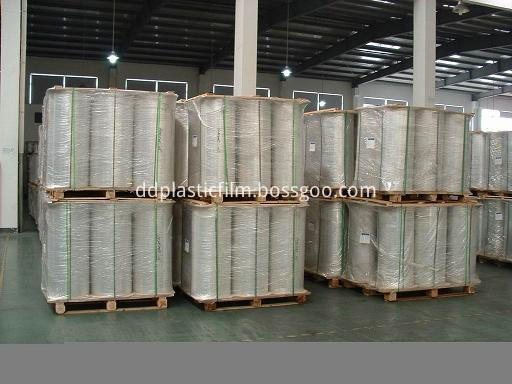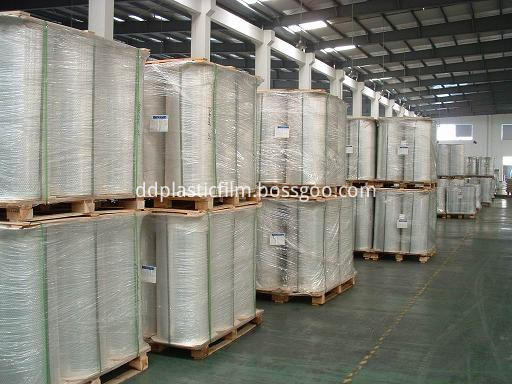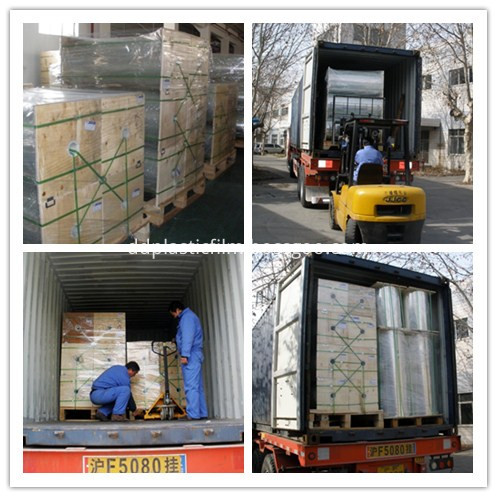1. How to use water-based ink correctly? 1. Characteristics of water-based ink: (1) The effect of slow drying on printed products: General water-based inks can be divided into two types, one is alcohol (> 10%), the other is no alcohol or less alcohol (<10%). Regardless of the type of product, for solvent-based inks, they are slow-drying inks. Under the action of water, slow-drying ink will cause great difficulty in drying the ink, and the printed products are prone to problems such as sag (water wave), back sticking, and uneven transfer. Generally speaking, the higher the content of ethanol in ink, the lower the probability of the above problems (except isopropyl alcohol). (2) The effect of transfer rate on printed products: the same is water ink, different solid content, the transfer rate of ink is different. Let go of the material (filling), let's say, as far as the resin is concerned, the content is different and the transfer rate is also different. High resin content (> 30%), the transfer rate of the light version is high; low resin content (<25%), the transfer rate of the deep version is high. How to make the transition from high-key to low-key version (dark tone), this is the problem to be solved by water-based ink. Otherwise, due to the uneven transfer rate, it is difficult to print out the gradation effect. (3) The effect of solubility on printed products: In water-based inks, water is not a true solvent, that is, water cannot dissolve the resin alone. The so-called water-based ink, in which water is not a continuous continuous phase, nor a continuous dispersed phase. For this reason, when adding water to the ink, the assistance of other factors is needed to make the water evenly dispersed in the ink. The use of water-based inks, like solvent-based inks, can be added more casually. Otherwise, it can be surely said that the printed products will have uneven transfer, uneven color development, and poor dispersion. (4). The effect of the coverage rate on the printed product: Due to the characteristics of the resin and pigment used in the water-based ink, the color ink is often more transparent. This has the problem of insufficient coverage. The method of increasing the pigment content can solve some problems, but at the same time, it will also have negative effects such as high viscosity and large thixotropy. Therefore, if the printing enterprise has a high demand for cover rate, it should be addressed to the ink factory. 2. Standardized printing operations: (1) Elements of pre-press work: Pre-press work is very important and an important factor in determining the quality of printed products. ①Ink adjustment: Unlike solvent-based inks, water-based inks cannot be diluted in the same way as solvent-based inks. You can add a large amount of thinner at one time. Since water is not a true solvent for resins, two points should be noted when diluting: one is not to dilute while printing; the other is not to add more than 8% thinner at one time. The standard practice is to determine the drying conditions (> 55 ℃), determine the printing speed (such as 40m / min), determine the plate depth (such as 35μm), first dilute 5% water in the bucket, and stir for 10 minutes , Then dilute 5% of water and stir for 10 minutes to prepare for printing on the machine. At this time, the printing viscosity should be adjusted within 18 ~ 20s. If you need to adjust the viscosity again, dilute 5% ~ 10% of the water in the ink tank, as before. ②Adjust the scraper: the distance between the front knife and the sub knife is adjusted to 0.3cm. The knife angle is set to 60 ~ 120 degrees (according to the actual confirmation). ③Thinner: The adjustment of the thinner is very important, so sloppy. The most basic thing is to adjust the pH of the water to an appropriate range (such as 9). If possible, adjust the water tension. This is very good for printing. Many people think that just adding water is unscientific. The adjustment formula of the thinner should be adjusted according to the requirements of the ink manufacturer, so as to be targeted. (2) Working elements in printing: The operation of water-based ink in the printing process is very convenient. To maintain stable print quality, we must pay attention to three aspects. ①The stability of pH value: The general water-based ink requires a pH value between 8 and 9.5. Because ink manufacturers consider factors such as drying, water resistance, and cost, the pH balancers used are often fast-volatile substances. This can easily cause changes in pH, so be sure to pay attention to changes in pH during use. The printing house should purchase corresponding equipment, such as a pH test pen, to track the ink in the ink tank. The unstable pH value directly affects the quality stability of printed products. ②Viscosity adjustment of water-based ink: Before printing on the machine, the viscosity of the water ink has been adjusted, but in the printing process, it is still necessary to track the change in the viscosity of the ink. , It is best to operate in the ratio of 3: 7 (alcohol: water). We often make empirical mistakes. We use solvent-based inks for water-based inks. There are many thinners added at once, and it is not scientific to measure the dosage accurately. The viscosity adjustment of the water-based ink can be observed and adjusted once every 4 hours. As long as the pH value and viscosity are well controlled, the printing quality of water-based ink will be relatively stable. ③Adjustment of the pressure roller: The pressure of the PE low-pressure membrane is slightly higher, and the rest depends on the condition of the equipment. The faster the printing speed, the higher the pressure. ④Rewinding: Rewinding tension should be loose or not tight, that is to say, the tension should not be too large, and the diameter of the winding should not be too large, and should not exceed the diameter range of 55cm. ⑤ Printing plate and ink tank: If you need to stop the machine during printing, the time for the printing plate to detach from the ink tank cannot be too long, because the resin of water-based ink is often insoluble, which is fundamentally different from solvent ink. ⑥Scraper cleaning: cleaning once every 8 hours, can be operated on the machine. Materials required for printing: pH pen / viscosity cup (3 #) / dimming oil / ethanol / color paste / metering cup (10, 50, 100, 500, 1000L). (3) Working elements after printing: ①Fake dry detection: Because ammonia is often used as a pH adjuster in water-based inks, it is impossible for ammonia to completely volatilize during the drying and volatilization process. About 30 to 40% of ammonia remains in the ink layer. When the ammonia-based substance in the ink layer reaches 0.3, it is easy to appear "false-drying phenomenon". This substance will cause adverse effects on the printed product after printing, and the most prominent is the "back sticking". The effective way to solve this problem is to dry for 1 hour at 70 ℃ after the printed product is off the machine. ②Adhesion test: random instant initial test (attachment area up to 90%)-12-hour test (attachment area up to 100%) ③ Water resistance test: 1 hour test (wet wipe 10 times without ink drop) — 24 hour test (wet wipe 20 times without ink drop) — 7 days test (wet wipe 30 times without ink drop). Or test as required. ④Other testing. The performance period of water-based ink is generally 7 days. Longer than solvent-based inks. 3. Requirements for the printing plate: the depth of the printing plate should be set between 25 ~ 35 mm. Hardness is greater than 800. The basic requirements for version production are: ①Depth between 15 ~ 25μm: Cylindrical version with 150 ~ 160 mesh dots and 45 degree inclination. ②Depth between 25 ~ 35μm: cylindrical version with 90 ~ 110 mesh and 45 degree inclination. ③ The fineness of ink is between 10 ~ 15μm, and the screen size should be greater than 170 mesh; the fineness of ink is between 5 ~ 10μm, and the screen size should be greater than 190 mesh. ④ Gravity tone ratio: Due to the slow drying of the water-based ink and the low viscosity, the ink in the gravure hole is almost not dry, so the transfer of high-profile parts is better, but the transfer of dark parts is poor, and the contrast of the layer tends to weaken . The solution is to adjust the middle depth of the mesh, so that the middle of the version is adjusted to the depth of the high gloss mesh. Generally speaking, it is shallower than the solvent type. 4. Printing failures and solutions: (1) Fog and paste: Reason: When printing at higher speeds, water-based inks are prone to fog and paste. This is because the water-based film dries and evaporates slowly, and the film layer attached to the surface of the gravure cylinder is easily transferred to the substrate, and then the ink Powder is mixed in the tank, or the insoluble matter is caused by the precipitation of the resin, which increases the resistance of the scraper and prevents the scraper from scraping the plate. Solution: Filter the ink, add the appropriate pH balance agent, increase the pressure of the scraper (try not to use it as much as possible), and improve the production accuracy of the version. (2) Precipitation of resin: causes: excessive dilution, unbalanced pH value, and adding the wrong diluent. Solution: Adjust the pH value and filter the ink. (3) Slow drying: Reasons: too high viscosity and insufficient temperature and wind in the oven. Solution: reduce viscosity, increase oven temperature and wind force. Note: If overprinting four colors, the drying speed of water-based ink is 4 ~ 5 times that of solvent ink. Using water-based ink, the drying speed of the plate depth of 20 μm is basically the same as that of the solvent ink, the plate depth of 38 μm. (4) Water ripple: Reasons: over-dilution, low viscosity, too slow printing speed, and uneven film. Solution: Add resin and color paste to increase printing speed. [next] 2. How to reduce the cost of using water-based ink? The reduction in the use cost comes from four factors, one is to improve the yield of printed products, one is to reduce the amount of ink on the ink, one is to consume power reasonably, and the other is the preservation of the printing plate and scraper. (1) How to improve the yield of printed products: ①Strictly guarantee the stability and balance of the pH value: during the entire printing process, the pH value of the ink after dilution should be guaranteed between 8.5 and 9. Too low will make the ink thicker, drying slower, and prone to "pinholes", even resin precipitation, the appearance of particles, and affect the water resistance of printed products. Excessively high pH values ​​are prone to "sagging" and other phenomena. If the above elements can be effectively implemented, the print quality of water-based ink is much more stable than that of solvent ink, which can effectively guarantee the quality of the print and achieve the purpose of reducing costs. (2) How to reduce the amount of ink on the ink: Water-based inks tend to increase the pigment content of the ink during production due to their own drying reasons to meet the needs of light printing. If the solvent ink uses a gravure plate with a depth of 40 μm, and the water-based ink uses a gravure plate with a depth of 30 μm, basically the effect of the printed product is the same. Calculated in this way, the inking volume of water-based ink is about 25% lower than that of solvent ink, to offset the difference in price between the two. Therefore, the manufacturer should adjust the depth of the printing plate when appropriate. (3) How to consume power reasonably: The power consumption mainly comes from the oven. The reasonable design of the oven determines whether it can save electricity. The oven used in the original solvent ink printing should be properly modified to achieve the energy reduction effect. The author has tested that if the oven is changed to external heating, the thermal energy can be reduced by 40%. (4) How to do the preservation of printing plates and doctor blades: the choice of water-based ink is a prerequisite. Some of the water-based inks sold on the world, because of the ink body itself, are very damaging to the plate, but some The ink does not damage the plate or the knife. The printing manufacturer should consider this factor when trying it out. Furthermore, the pressure of the doctor blade must be controlled during printing. If the pressure of the doctor blade is too high, the ink on the plate can be wiped off. It is recommended that the printing manufacturer should change the supplier. Description: 1. Related field full effect smelting: from HL-18 water-based resin, HL¬318 water-based dispersant, HL-40 color paste, HL-218 multifunctional auxiliary. ②Strictly guarantee the stability of the viscosity of the ink system: before printing, after adjusting the viscosity of the ink on the machine, add water thinner directly to the ink slag during printing, you must be cautious, the ratio must be strictly controlled within 3% ~ 5% And must be responsible for the person to prevent multiple people to manage. The stability of viscosity plays a decisive role in the stability of print quality. ③ Reasonable blending of thinner: The thinner of water-based ink cannot be simply regarded as "water", which is a wrong concept. In fact, in the water-based ink thinner, in order to better balance the various factors, it is necessary to add appropriate additives, which requires printing manufacturers to do this job according to the requirements of the ink manufacturer. Generally speaking, proper pH balancer, viscosity balancer, water-oil balance should be added to the diluent. The gravure water-based plastic film ink produced by the company has been proved by practice and can be applied to the printing of BOPP, PP, PE, high and low pressure, PET, NY, PVC, EVA, cellophane, non-woven fabric, various white paper, kraft paper, Therefore, it is called Yequanxiaoye. 2. Seven-point ink three-point printing: the use of water-based ink, its methods and elements, compared with solvent ink, there are many differences. In other words, no matter how good the printing master is without training, it is difficult to print good prints. As far as the status quo is concerned, ink and ink printing training responsibilities are the responsibility of ink and ink manufacturers. The topic of discussion in the next issue is: Analysis of the balance between water-based ink dispersion and water resistance.
Laser Printing Pp Synthetic Paper/Synthetic pp paper
Advantage of Sythetic Pp Paper:
1.Different colors in 2 sides
2. ideal product to wrap gift, flower, bouquet, candy, basket
3.Various and bright color,follow PANTONE COLOR NUMBER,soft feature
4.OEM accepted,can do the size as customers' requirements
Characters:
1. Instant Dry coating
Application:
Poster, Indoor advertising board, engineering drawing
Specification:
Color:white,matte,glossy
Available thickness:30-250micron
Available treatment:matte or glossy
Available density:0.61g/cm3 0.69g/cm3 0.8g/cm3 1.25g/cm3
Available Width/Length:300mm~2500mm 1000M~38000M per roll
Laser Printing PP Synthetic Paper show:
Ware house:
Shipping:
Laser Printing PP Synthetic Paper Waterproof Pp Paper,Water Based Pp Paper,Inkjet Coated Pp Paper,Laser Pp Synthetic Paper,Sythetic Pp Paper,Laser Printing Pp Paper Shijiazhuang dadao Packaging materials Co , https://www.ddplasticfilm.com
â‘£Film: The material needs to be flat, even and thin, without folding or dead marks, and the corona should be above 38 dyne.
2. High image definition
3. Long term durablity
4. Water resistant




